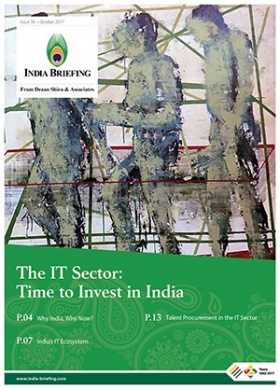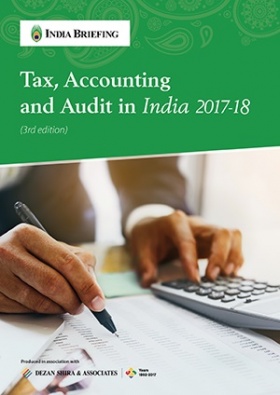India Makes Progress on GST Implementation
DELHI – India moved closer towards implementing a Goods and Services Tax (GST) with the conclusion of the latest meeting by the Empowered Committee of State Finance Ministers this Wednesday.
While numerous hurdles remain, central and state Finance Ministers agreed on several important items that are expected to speed up the implementation process:
- Two-part levy: Central GST and State GST;
- Common threshold for the levy of GST: All businesses with annual turnover of more than Rs 10 lakh (US$16,480) for general states and Rs 5 lakh (US$8,240) for special-category and north-eastern states;
- Harmonize GST exemption lists nationwide: 96 items exempted by States and 243 items by the Center.
The proposed GST will replace several existing taxes, including the central level excise tax and service tax, and state level VAT, entertainment tax, lottery tax and electricity duty, with one single tax, thus facilitating the consolidation of a single market across the country and allowing for greater supply chain efficiency and economies of scale.
The Central Sales Tax (CST), which is levied by the Center on inter-state movement of goods but collected by the states, has been a major obstacle towards moving the GST proposal forward, as some states are concerned about the loss of revenue they would face with the phasing out of the CST.
More industrialized states, such as Gujarat, Maharashtra and Tamil Nadu, which derive 70 to 80 percent of their revenue from state taxes, are most concerned about the potential change in tax base with the GST. By shifting taxation from production to consumption, industrialized states which currently export most of their products to other states around the nation will face significant losses in tax revenue, since the levies will instead go to states where the products are sold.
RELATED: Goods on India GST Exempted List May Qualify for Lower Tax Rate
Prior to Wednesday’s meeting, Finance Minister Arun Jaitley had assured states that the Center would compensate their loss in CST revenue of about Rs. 34,000 crore (about US$5.6 billion) over a three-year period, appeasing some of the concerns.
Full implementation of GST could raise India’s GDP growth by 0.9 to 1.7 percent, according to the National Council of Applied Economic Research (NCAER).
However, although Jaitley had committed to resolve all outstanding issues by the end of the year, challenges remain before the GST can be realized.
- Differences remain over the degree of control between states and the Center over central GST. Below the Rs 1.5 crore limit, the Center wants to keep legal control and give states administrative control, but states are asking for both. Above the limit, dual-control is agreed upon.
- States are also pushing for high-tax products such as petroleum, alcohol and tobacco out of the GST purview.
- Some are also concerned that the proposed GST structure will infringe on states’ financial autonomy by removing a large portion of their own revenue source.
A new GST Constitutional Amendment Bill will be drafted for the winter session of Parliament, to replace the current one which was first introduced in 2011. To pass, the bill must secure votes from two-thirds of lawmakers in both houses of parliament and half of the 29 states.
Asia Briefing Ltd. is a subsidiary of Dezan Shira & Associates. Dezan Shira is a specialist foreign direct investment practice, providing corporate establishment, business advisory, tax advisory and compliance, accounting, payroll, due diligence and financial review services to multinationals investing in China, Hong Kong, India, Vietnam, Singapore and the rest of ASEAN. For further information, please email india@dezshira.com or visit www.dezshira.com.
Stay up to date with the latest business and investment trends in Asia by subscribing to our complimentary update service featuring news, commentary and regulatory insight.
Related Reading
 India’s Taxes for Foreign-invested Entities
India’s Taxes for Foreign-invested Entities
In this issue of India Briefing, we provide an overview of India’s taxes on business, which includes a section on India’s double taxation avoidance agreements, and then discuss individual income tax rates and deductions. Finally, we discuss India’s tax reforms in 2013, including an article by Chandrahas Choudhury, New Delhi correspondent for Bloomberg View, “Can India Tax Itself to Prosperity?”
 Tax, Accounting, and Audit in India 2014-2015
Tax, Accounting, and Audit in India 2014-2015
Tax, Accounting, and Audit in India 2014-2015 offers a comprehensive overview of the major taxes foreign investors are likely to encounter when establishing or operating a business in India as well as other tax-relevant obligations. This concise, detailed, yet pragmatic guide is ideal for CFOs, compliance officers and heads of accounting who need to be able to navigate the complex tax and accounting landscape in India in order to effectively manage and strategically plan their India-based operations.
- Previous Article Tax, Accounting, and Audit in India 2014-2015
- Next Article India Continues Tax Dispute With Cyprus and Mauritius








